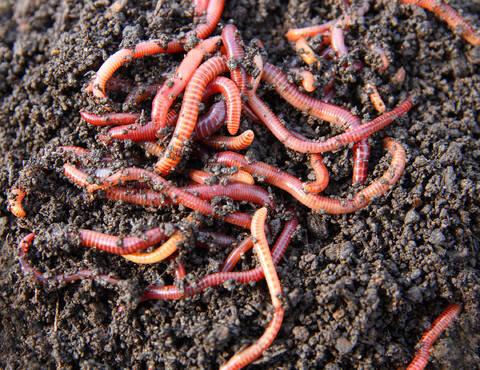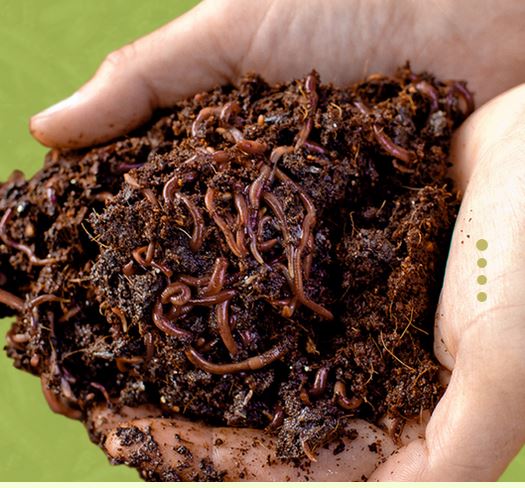Active red worms: The best choice for composting
Active red worms: The best choice for composting
Blog Article
Why Red Wigglers Are Crucial for Chemical-free Farming
Red wigglers play an essential role in organic farming, largely with their distinct capability to decay natural materials and boost dirt health. The level of their effect on farming methods and soil biology elevates appealing questions concerning the future of natural farming.
Duty of Red Wigglers in Soil Wellness

In addition, red wigglers boost soil framework by developing networks as they delve. These channels boost oygenation and water infiltration, advertising a healthier root setting. Their activity likewise assists in maintaining ideal moisture degrees, which is essential for healthy and balanced plant growth.

Benefits of Worm Spreadings
Worm spreadings, the nutrient-rich excrement generated by red wigglers, offer as an effective amendment for natural farming. These castings are packed with crucial nutrients such as nitrogen, phosphorus, and potassium, which are important for plant development. Unlike artificial fertilizers, worm spreadings release nutrients slowly, giving a stable supply gradually and reducing the danger of nutrient leaching and runoff.
In addition, worm castings improve dirt structure and aeration, advertising healthier root systems. Their high organic issue content enhances moisture retention, enabling plants to much better withstand drought conditions. In addition, worm spreadings consist of useful microorganisms that sustain plant health by reducing microorganisms and boosting vitamins and mineral uptake.
The application of worm spreadings can cause increased plant returns and boosted quality of produce, making them an indispensable source for natural farmers. Their use also lines up with sustainable farming techniques, contributing to dirt fertility without the adverse ecological impacts associated with chemical fertilizers. In general, the unification of worm castings into agricultural methods promotes a much more durable and efficient environment, emphasizing the importance of red wigglers in chemical-free farming systems.

Enhancing Nutrient Cycling
(red worms for composting)Nutrient biking is a crucial procedure in organic farming, and the combination of red wigglers plays a pivotal duty in enhancing this cycle. As red wigglers take in decomposing organic issue, they eliminate nutrient-rich castings, which are bursting with advantageous microorganisms.
Moreover, red wigglers assist to increase the mineralization of nutrients, converting them from inert types into bioavailable types that plants can absorb. This process is critical for maintaining soil fertility and advertising healthy crop development. The visibility of red wigglers additionally motivates a varied soil ecological community, fostering an equilibrium of nutrients that sustains different plant types.
Improving Soil Structure
The improvement of dirt framework is vital for cultivating a healthy agricultural ecosystem, and the activity of red wigglers considerably adds to this renovation. These earthworms play an essential role in freshening the dirt and producing a network of channels that facilitate water infiltration and root infiltration. As they burrow with the dirt, red wigglers break up compressed layers, enabling far better oxygen exchange and advertising microbial activity.
Additionally, the raw material created from their over here waste, understood as vermicast, enhances soil gathering. This procedure develops stable globs of dirt bits, enhancing dirt porosity and minimizing disintegration (red wigglers). The visibility of red wigglers additionally motivates the advancement of helpful fungal networks, which are critical for nutrient uptake by plants
Supporting Lasting Practices
Incorporating red wigglers right into natural farming methods not only boosts soil health and wellness however also advertises sustainable farming methods. These earthworms play an important duty in nutrition cycling, changing natural waste into useful garden compost that enriches the soil. By making use of red wigglers, farmers can successfully decrease dependence on artificial fertilizers, therefore minimizing chemical drainage and its harmful results on environments.
Furthermore, the unification of red wigglers encourages the technique of recycling natural materials, such as cooking area scraps and farm waste. This waste reduction approach not only lowers disposal costs however additionally fosters a closed-loop system where nutrients are continually gone back to the soil (red wigglers). Such methods are necessary in minimizing climate change, as they boost carbon sequestration and reduce greenhouse gas discharges
Furthermore, red wigglers enhance water retention in the dirt, which is important in times of dry spell. Their burrowing activities produce networks that enable water to penetrate much deeper right into the ground, therefore advertising efficient water usage. Inevitably, integrating red wigglers right into natural farming not only supports biodiversity however additionally aligns with the principles of sustainable agriculture, using a holistic technique to food manufacturing.
Conclusion
In conclusion, red wigglers play a vital function in natural farming by substantially enhancing soil wellness and fertility. Therefore, the combination of red wigglers right into agricultural practices is vital for advertising sustainability and enhancing general soil quality.
Report this page